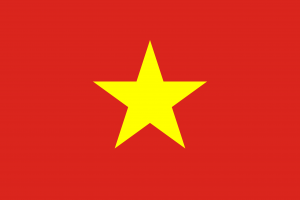Language/Vietnamese/Vocabulary/Giving-Directions
 Հայերէն
Հայերէն Български език
Български език 官话
官话 官話
官話 Hrvatski jezik
Hrvatski jezik Český jazyk
Český jazyk Nederlands
Nederlands English
English Suomen kieli
Suomen kieli Français
Français Deutsch
Deutsch עברית
עברית हिन्दी
हिन्दी Magyar
Magyar Bahasa Indonesia
Bahasa Indonesia فارسی
فارسی Italiano
Italiano 日本語
日本語 Қазақ тілі
Қазақ тілі 한국어
한국어 Lietuvių kalba
Lietuvių kalba Νέα Ελληνικά
Νέα Ελληνικά Şimali Azərbaycanlılar
Şimali Azərbaycanlılar Język polski
Język polski Português
Português Limba Română
Limba Română Русский язык
Русский язык Српски
Српски Español
Español العربية القياسية
العربية القياسية Svenska
Svenska Wikang Tagalog
Wikang Tagalog தமிழ்
தமிழ் ภาษาไทย
ภาษาไทย Türkçe
Türkçe Українська мова
Українська мова Urdu
UrduAs a Vietnamese language teacher for 20 years, I have seen how important it is for students to learn how to give and receive directions in Vietnamese. In this lesson, we will learn the vocabulary and phrases related to giving directions in Vietnamese.
Don't hesitate to look into these other pages after completing this lesson: Counting 11 20 & Food Ordering.
Vocabulary
Here are some essential vocabulary words and phrases related to giving and receiving directions in Vietnamese:
| Vietnamese | Pronunciation | English |
|---|---|---|
| đường | [ɗɨəŋ] | road |
| ngã tư | [ŋaː tɕɯ] | intersection |
| quẹo trái | [kwêw trái] | turn left |
| quẹo phải | [kwêw fɐ̂ːj] | turn right |
| đi thẳng | [ɗi tâŋ] | go straight |
| giao lộ | [zajəw lâw] | crossroads |
| phố | [fɔ̂] | street |
| cầu vượt | [kâw ʋɨǰt] | overpass |
Other useful phrases include:
- Bến xe bus (bus station)
- Bến tàu (train station)
- Sân bay (airport)
It's important to note that in Vietnam, many streets are named after important people or events in history. Some street names can be difficult to pronounce, so don't be afraid to ask for help!
Giving Directions
Now that we've learned the necessary vocabulary and phrases, let's practice giving directions in Vietnamese:
- Excuse me, how do I get to the post office? (Xin lỗi, tôi đến bưu điện như thế nào?)
- Walk straight ahead until you see the intersection. (Đi thẳng cho đến khi bạn thấy ngã tư.)
- Turn left at the intersection and then walk straight for two blocks. (Rẽ trái tại ngã tư và đi thẳng hai khối.)
- The post office is on your right. (Bưu điện ở bên phải của bạn.)
It's important to use polite forms of speech when asking for directions, so be sure to employ proper Vietnamese etiquette.
Cultural Insights
In Vietnam, motorbikes are the most popular mode of transportation. They are relatively cheap and can easily navigate through the country's narrow streets. However, motorbike accidents are very common in Vietnam, so be sure to exercise caution when on the roads.
Another interesting aspect of Vietnamese transportation is the "xe om," or motorbike taxi. Xe oms are a popular form of transportation, but they are not regulated and can sometimes be dangerous. Always be sure to use reputable xe om drivers.
Conclusion
Giving directions is an essential skill for anyone travelling or living in Vietnam. By learning the necessary vocabulary and phrases, students can make their time in Vietnam much easier and more enjoyable.
I hope this lesson has been helpful. If you have any questions or suggestions, please do not hesitate to ask. Thank you for learning with me!
Sources
- Essential Vocabulary for Directions in Vietnamese
- Vietnamese Vocabulary: Transportation and Giving Directions
- 50+ Ways To Ask & Give Directions In Vietnamese Like A Pro - Ling ...
Now that you've completed this lesson, don't stop learning! Check out these related topics: Drinks and Beverages & Count to 10.
Other Lessons
- Vietnamese Food
- Drinks and Beverages
- Food Ordering
- Months of the Year
- Hello and Goodbye
- Numbers
- Sports
- Animals
- Count from 1 to 10
- Geometry

